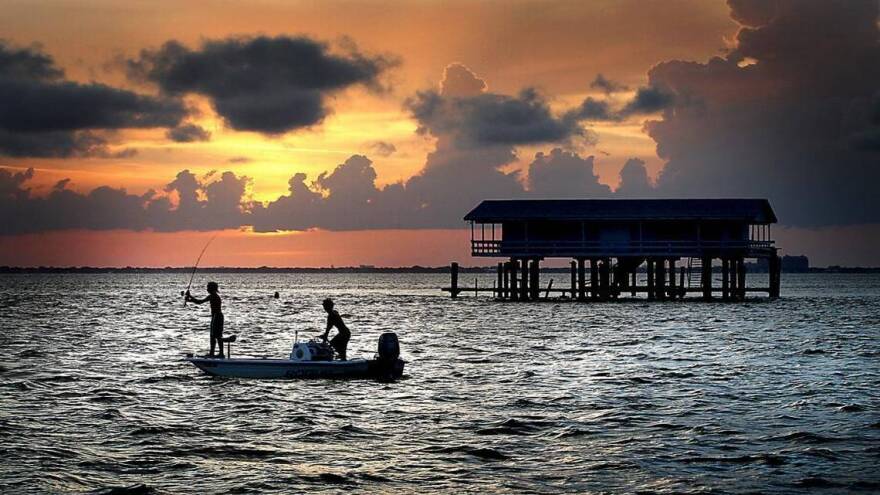South Florida lost a piece of its storied history Monday when fire destroyed one of the seven remaining houses in Stiltsville, the collection of elevated shacks erected in the shallows of Biscayne Bay.
Coral Gables police first spotted a plume of smoke and contacted Miami fire officials at 7:14 a.m., said Lt. Pete Sanchez. When fire crews arrived, they found the Leshaw house engulfed, stoked by heavy winds.
You turn to WLRN for reporting you can trust and stories that move our South Florida community forward. Your support makes it possible. Please donate now. Thank you.
The house sits just south of the more recognizable A-frame house. Sanchez said crews used a deck gun to blast the fire and had it extinguished within 10 minutes, but not in time to save the house.
“I want to know what the hell happened here,” said Duff Matson, who co-owned one of the homes and has worked to preserve them and began getting texts about the fire early Monday. “It’s killing us. Everybody is texting it’s horrible. Another piece of Miami lost.”
Stiltsville rose from the flats in Biscayne Bay in the 1930s after a lobsterman nicknamed Crawfish Edde grounded a barge and began selling chowder to boaters, said park ranger Gary Bremen.
“Then somebody said, what if we put a building up on stilts,” he said.
That was decades before Biscayne National Monument was created in the 1960s and then Biscayne National Park in 1980.

By the 1960s, there were at least 27 structures.
“One would burn down or get knocked down in a hurricane and they’d put it up again," Bremen said. "And so there was this constant up and down kind of whack a mole situation where buildings would appear and disappear over the years.”
In its early days, Stiltsville was a place to escape for illegal drinking and gambling. In addition to houses, there were clubs, with names like the Quarterdeck and the Bikini Club, where women in two-piece bathing suits drank for free. There were also troubling rumors of prostitution rings.
The behavior helped forge an outlaw reputation that came to symbolize free-wheeling Miami. Stiltsville appeared in Life Magazine, the movie "Absence of Malice" and the iconic TV show "Miami Vice," becoming a stand-in as a pirate-y badge of honor.
But by the 1960s, the state of Florida was done with the lawlessness, Bremen said, and began demanding permits for the structures. That cut down on illegal activity and began a transformation into weekend get-aways for Miamians.
After Biscayne National Park was formed and expanded the boundaries of the former national monument, Stiltsville’s fate took a new turn. Park officials said they wanted to tear down the houses, which were difficult to maintain, and — for most, by 1999 — not much more than shacks on stilts. In 1992, Hurricane Andrew knocked down all but seven of the structures.
Owners and other supporters formed Save Old Stiltsville and waged a campaign to save the houses, arguing they were historic. Federal officials disagreed. Finally in 2000, a new park superintendent agreed to let the houses remain, under a trust co-managed by the structures’ former owners and members of the public, which makes them available for public use.
It’s not clear if the Leshaw house can be rebuilt. The deal with the park requires houses to be removed if more than 50% is damaged.
Sanchez said city and state investigators are looking into the cause of the fire. The house was unoccupied when firefighters arrived, he said, and a search by the U.S. Coast Guard found no boaters or anyone in nearby waters.






